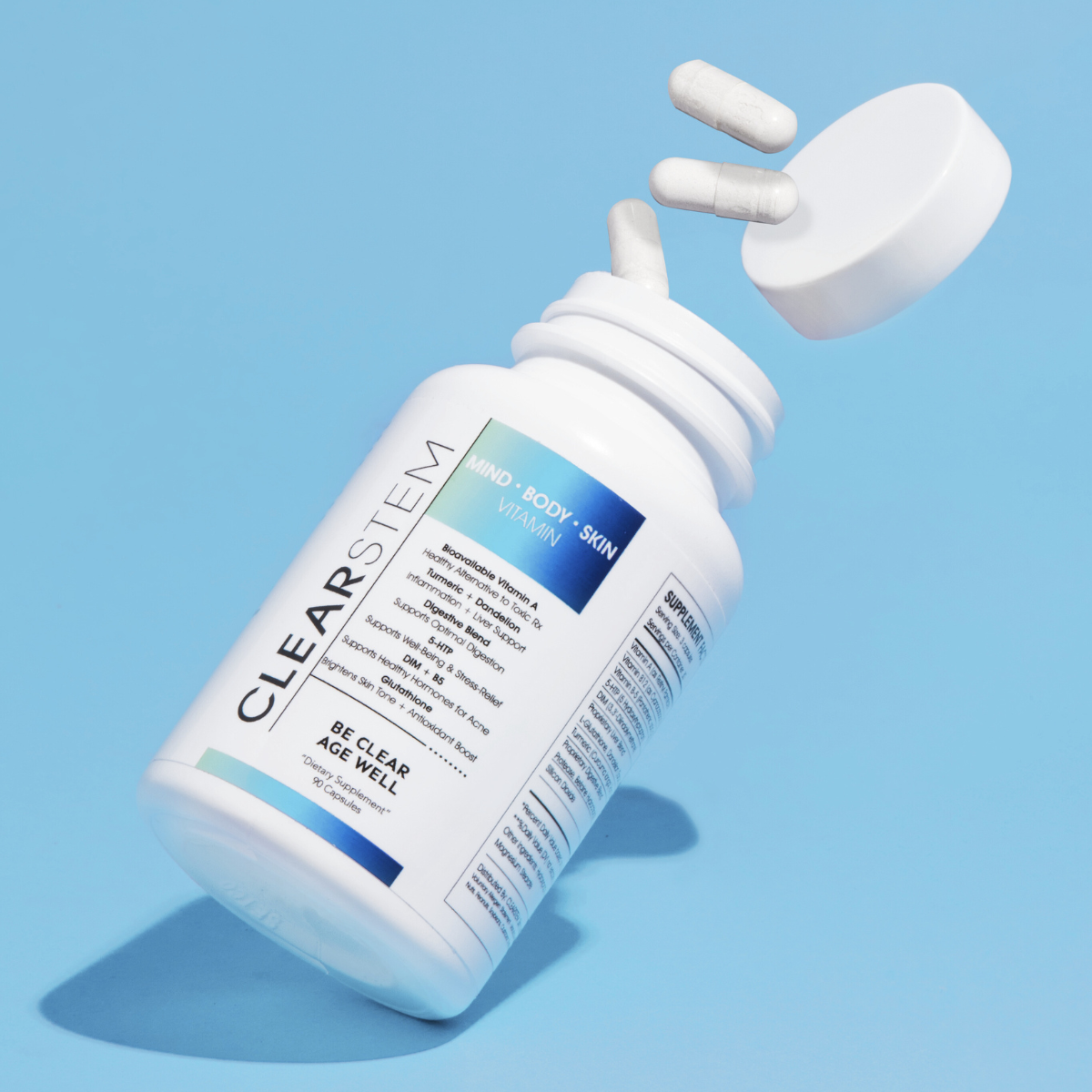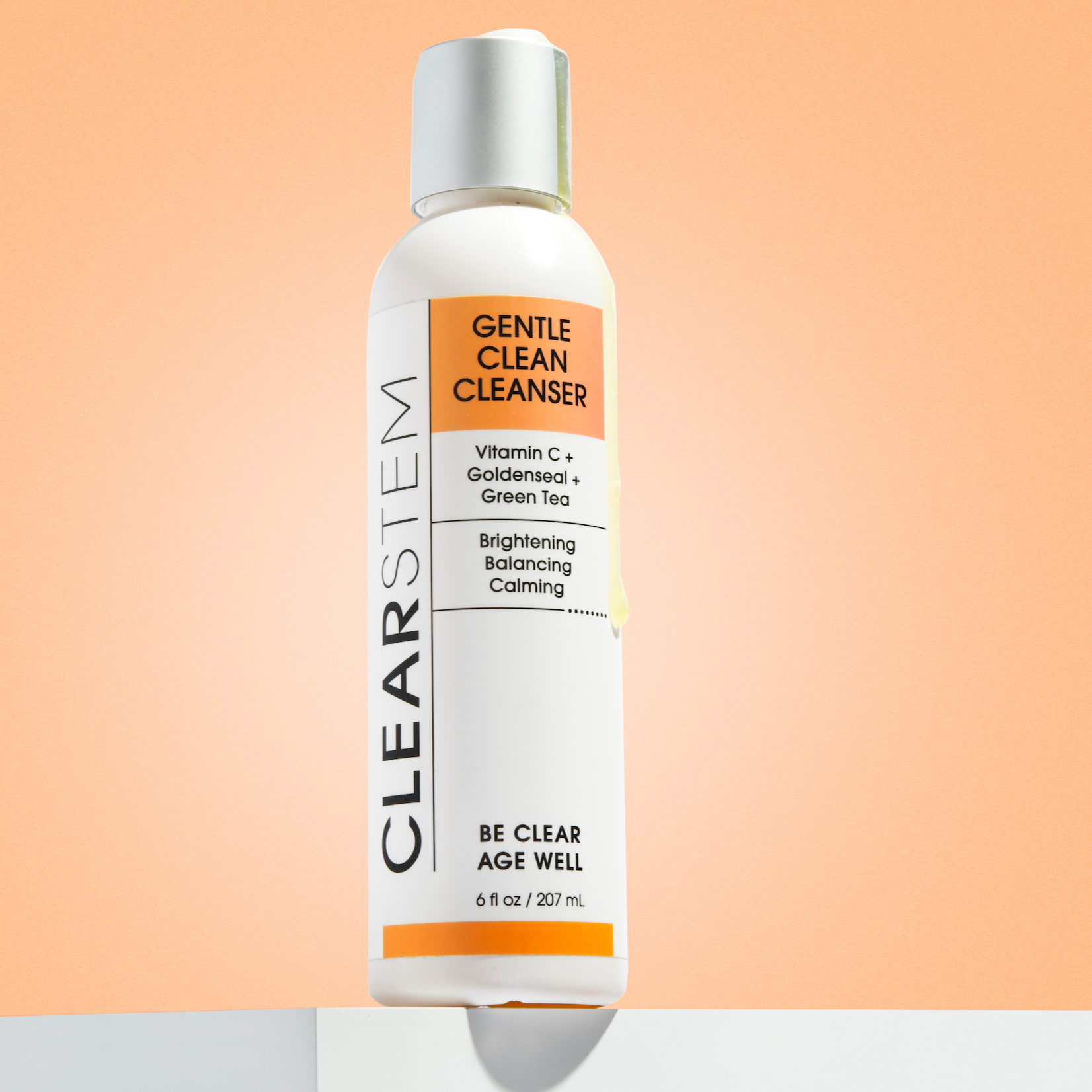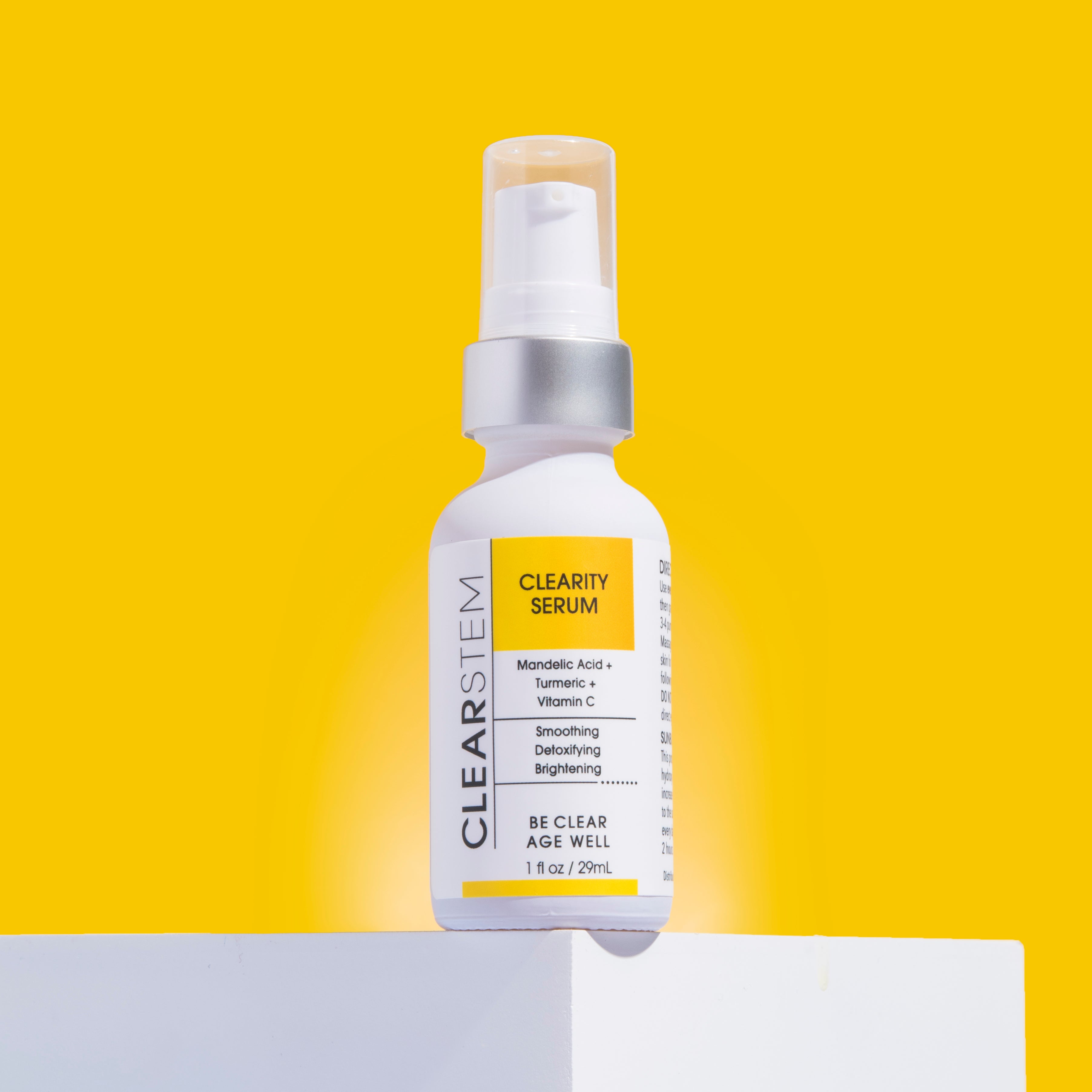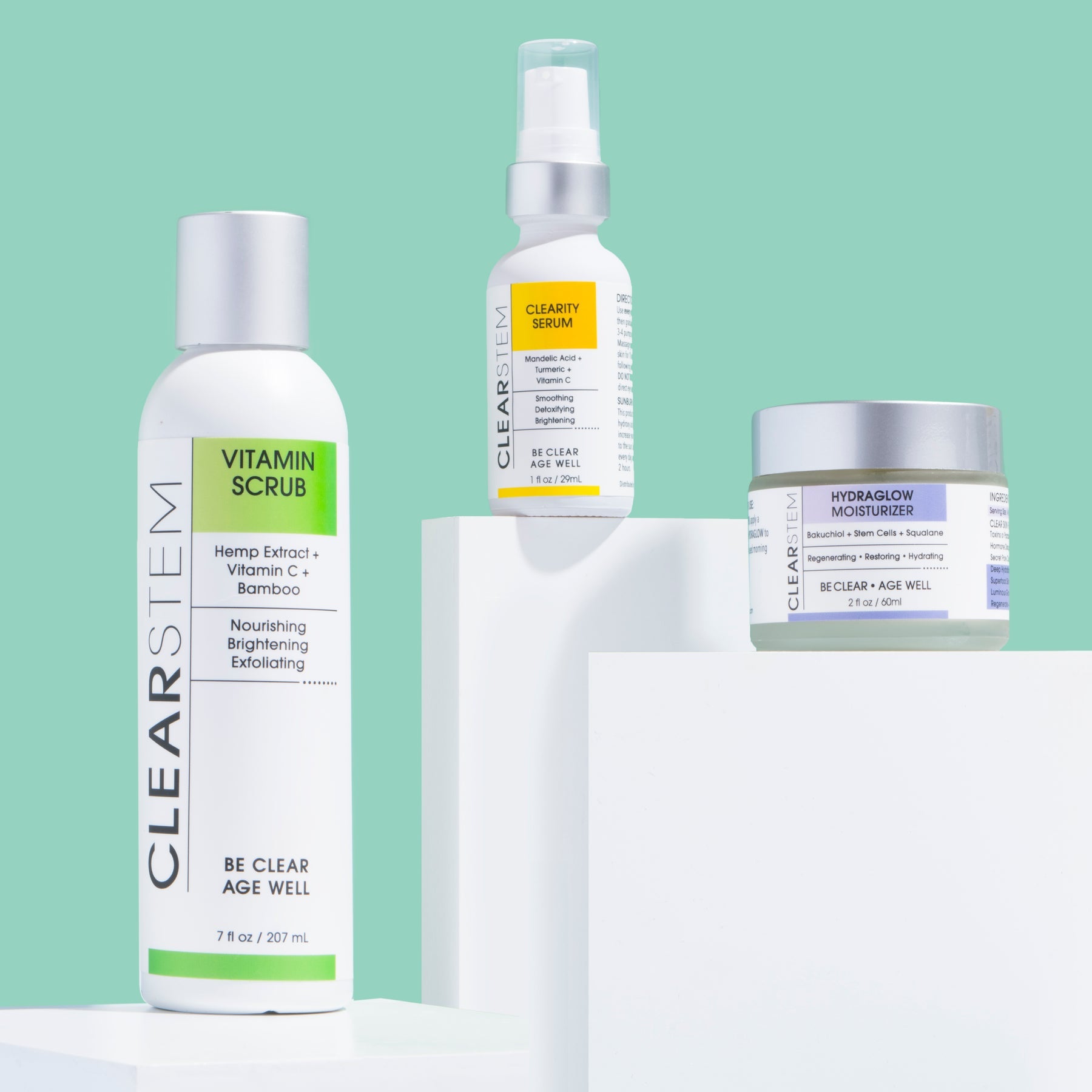In all avenues of our lives, a rest day is definitely a much-needed break that we should all take. Runners take them when training for marathons, and the nine-to-five crew also does, too. After all, who doesn’t enjoy a weekend after facing the daily grind Monday through Friday?
However, whether you realize it or not, our faces also need a rest day. Of course, we’re not pounding the pavement with it, because ouch, that’d seriously hurt. But if you’re using actives – that is, things like scrubs, retinols, alpha hydroxy acids (AHAs) or retinoids or vitamin C – then your face is going to need a break from them every once in a while.
If you don’t, then you could be looking at major skin irritation or a damaged acid mantle to show for your hard work and efforts. And that, dear friends, is what brings us to our main point here: what exactly is skin cycling, and what’s the big deal about it?
You’ve probably heard about skin cycling on TikTok or the ‘Gram, but the hashtag probably doesn’t spill the deets on what it is or what it does or why you should do it. Well, good news. You’ve come to the right place, and we’re here to show you the light about this new trend.
Today, we’re going to break down what it is and how it can help you step up your beauty game. Excited to learn more? Buckle in, as we’re about to get scientific on you, and before you know it, you too will be cycling like the pros.
What is Skin Cycling?
Just as our nutrient needs fluctuate in our cycles, our skin needs different things at different times. Skin cycling is a term that’s used to describe the way that you should apply certain products to your skin and how to know when to make those shifts. A common example is using astringent or exfoliating products nightly or every other night (AKA) “active ingredients” – with a rest day or two in between.(1)
Suffice to say, it’s very important to protect your skin, and that's basically what this method is all about. Despite masquerading as a newer trend, dermatologists and estheticians have long been aware and pushing for a periodic (but definitely not random!) use of these essential skincare products.
Let's add a bit more to answer that burning question of, "What is skin cycling and why is it so important?" In the context of the recent pandemic, many people started sharing tips and trying new methods and products on their skin on social media. Sharing is caring, after all, but this caused many people to start going overboard with their exfoliation to combat “maskne”.
Sadly, this trend has resulted in millions of people jumping on these beauty bandwagons without doing any research beforehand, then using the wrong products or using products that are not ideal or products that needed to be phased in or used sparingly. A classic example is applying products such as glycolic acid or retinoids (and their variants) in extreme doses or without enough rest days.
You know what this means for you? All of these mistakes have led to a lot of redness, irritation, and inflammation. Too many skin barriers were burned. Furthermore, many people found themselves facing damaged acid mantles, a compromised stratum corneum, accelerated aging, and even rebound acne breakouts. (2)
Long story short? If you’re going to use actives, then you need to skin cycle, period. That way, you can reap the benefits of these products, but without the redness and inflammation that comes from overuse.
Does Skin Cycling Actually Work?
If you’re wondering if skin cycling works, the answer is actually pretty straightforward: yes it does, albeit with some caveats. We’re going to go out on a limb here and say that you can’t go wrong with incorporating a skin cycling routine into your beauty regimen, though… if you do it the right way.
In fact, dermatologists have actually been advocating for this practice for a long time now, and social media has had a very positive role in encouraging it. That said, it might not be the best fit for those who want uber-radical changes in their complexion or are somewhat on the impatient side. If this is you, you may want to explore more aggressive avenues like microneedling or a professional chemical peel.
Instead, it’s more of a subtle skincare technique than a major overhaul to your daily beauty regimen. On the upside, skin cycling can help protect your skin from the irritation and redness that takes place with the excessive use of actives like retinoids or glycolic acids.
Of course, in pretty much the same way we become more resistant – or "thick-skinned," as the saying goes – your skin can get used to the active days of skin cycling. That means that some people will need more than the usual two nights of a product per cycle to have results.
The main takeaway, though, folks? You’re going to have to use your skincare products regularly if you want to see changes and not just whenever the whim strikes your fancy. Slow and steady wins the race, and this is doubly true when it comes to proper skincare.
How Skin Cycling Works
Let's say that you want to change the color of your bedroom wall. In order to do that, though, you first have to scrub it clean of any residual paint and dirt that it may have already on it. After that, you brush or wash away any remaining debris, and only then should you start slapping on the paint.
Skin cycling is pretty similar to this process. It’s actually super simple and straightforward to do, and can quickly become a habit with little to no fuss. It’s usually done across four days, or four nights, more precisely (as you should avoid sun exposure immediately after it).
The First Night
Step one, wash your face with lukewarm water (never hot!). Hot water inflames the skin in a negative way and can make hyperpigmentation and discoloration issues like melasma worse. You’ll need to use a cleanser (one with gentle surfactants and definitely no harsh sulfates on the ingredient list) twice a day, ideally when you wake up and before going to sleep at night. Doing so will help remove dirt, bacteria, and tiny particles that stick to your skin in your day-to-day life. (3)
This will also help remove sweat and any excess facial sebum (that is, skin oil) that your skin may produce throughout the day. If you are wearing makeup, you will need to use a makeup remover first to wash it off, such as micellar water or a non-comedogenic cleansing oil. Afterward, you’ll want to use your normal face wash to finish the process.
Once you’ve cleansed, you can reach for an exfoliant. On day one, for example, you can just focus on physical exfoliation (ex: a scrub or a textured exfoliating face mask). We only recommended using physical exfoliants that are designed to be gentle, like VITAMINSCRUB.
Once you have completed the scrub process (usually 10-20 seconds), applying a toner will help return that pH balance to your skin. Be sure to use one without alcohol, though, as it can strip your face and leave it feeling parched and painful. (6)
In addition to pH regulation, many modern toners have amazing humectant (or moisturizing) properties that can help keep your skin hydrated.
After you’re done with all of this, it's then time to nourish your skin a little bit- after all, scrubbing opens the gates to allow better penetration of your serums, so let’s go to that step! Using a facial serum – like our stem cell serum or BOUNCEBACK serum– will deliver targeted nutrients along with hyaluronic acid to hydrate your skin, leaving it stronger and more supple.
A final and key aspect of facial serums is that, if you are past your 30th birthday (or heck, even in your teens and twenties), they become a must in your skincare repertoire. For most people, the third decade of life comes with the first signs of aging and, therefore, deeper skin nutrition is required. (7)
The Second Night
Night two is when you can use a different type of exfoliant, namely a “chemical” one or “AHA”. An AHA (alpha hydroxy acid) such as mandelic, lactic, or glycolic acid can be a great option as they’re fairly gentle and effective. Glycolic will be the strongest here. (4).
So after you have cleansed and toned, then you would apply the AHA (these come in liquid or serum form). Let this item soak into your skin for at least 10 minutes to allow it to do its 2 main jobs, which are unclogging your pores and stimulating collagen. Mandelic acid is great for both acne and aging because it’s great for dissolving blackheads and gently stimulating new collagen.
PRO TIP: The moment you apply something else, it will neutralize the AHA chemical exfoliant so you must wait 10 minutes before the next step if you want optimal results.
After the 10 minutes is up, you can then follow with your hydrating steps, ideally a stem cell serum or an acne-safe moisturizer.
The Third and Fourth Night
These can be “rest” nights where you only do the cleansing step and moisturizing steps (skipping any type of exfoliation). After meaningful exfoliation (especially if you use retinoids which are generally irritating), you’re going to benefit from a short break from all of the actives.
Typically, this recovery period takes about two days, which highlights the importance of the third and fourth days of a four-day skincare cycle for most people. That said, some of you may need a longer period of time, while others are just fine with one day of recovery and, eventually, no recovery days at all.
What you are going to want to avoid doing is applying any drying or irritating products like retinoids during your rest days. Instead, you’re going to want to apply the nourishing products that we’ve mentioned before. That way, you can enjoy well-hydrated and moisturized skin barrier.
Your skin will thank you, as will its microbiome (those invisible-to-the-naked-eye microscopic lifeforms that are part of your natural barrier against germs and bacterial infection). You will keep cleansing just the same, just without using potentially irritating products, before going for the moisturizer products. (9)
You can also use a hydrating face mask to help boost your skin’s recovery during your rest day. You should also apply the facial serum before the moisturizer, as it has smaller molecules and can penetrate easier if applied first.
The Other Nights
While it’s good to phase in and alternate types of exfoliants on different nights, the amount of “rest days” will be determined by your own skin’s sensitivity, climate, and dryness. If you have oily skin you will benefit from exfoliating every other night, whereas if you are dry you may only be able to tolerate 2 “active” nights a week. There is no right or wrong, it’s all individual and you can see how your skin does on its rest days to gauge when to add another active one.
PRO TIP: Think of skin cycling like exercise routines- it’s smart to mix up the workouts and then have days off.
Benefits of Skin Cycling
Going through all of this trouble to make your perfect routine will pay off in the end for you. You get the perk of the strong corrective exfoliants and the rest days to restore your barrier, so you’re shedding dead skin, stimulating collagen, and keeping things balanced overall- which is the goal of this concept. These are the three main benefits of skin cycling:
- Repairing your skin barrier. Your skin's beauty is matched by its importance as a barrier against all kinds of things, like germs that can cause infections, various substances it can come in contact with, and any potential allergens. A healthy skin barrier that can withstand all of this can also avoid different dermatitis (skin inflammation) and even acne with greater ease. (10)
- Reducing side effects. Rotating the products will reduce the possibility of side effects caused by the actives that you’re using. Exfoliants and retinoids, for example, can damage the outer layer of the skin and cause unwanted irritation.
- Protecting from seasonal changes. Springtime brings allergens, but fall and winter bring dry skin. Less humidity in the atmosphere and the cold simply aren’t going to be BFFs with skin that’s been treated with retinoids. Conditions like eczema may get worse in this climate, but recovery days – and a good winter skincare routine – can help keep your skin strong enough to face the brutal winter chill.
Are There Any Side Effects of Skin Cycling?
As is the case with any medication, you can get over-the-counter products anywhere, but only your doctor can provide you with prescription treatments. That is definitely going to be the case with many retinoids (like tretinoin). While some can be picked up at any drugstore, you’re going to need a script from your derm to get stronger ones.
Retinoids are related to vitamin A. However, retinol is an over-the-counter medication that needs to be activated on the skin to be effective. Meanwhile, retinoids are an already active drug and therefore are much more potent and need that prescription.
If you are new to the game, you should be very careful with how often you apply them – even more so if you have sensitive skin. Some of these unwanted side effects include dryness (a real pain in the hiney during the summer's heat), redness or irritation (don't forget that retinoids are an acid), and inflammation (a natural skin response to any type of exfoliation).
Sunburn is also a concern, as retinoids increase the turnover rate of the superficial cells in your skin (a process known as “desquamation”). This leaves your skin much more vulnerable to the sun's rays, which means that using sunscreen becomes even more important. Plus, you can get vitamin D another time, and the tanned leather look isn’t good for anyone. (11)
The Takeaway
In this day and age where UV rays, air pollution, and other skin-damaging elements seem to be "out to get you," trying to maintain a healthy, clean and beautiful face can definitely be a major challenge. Exfoliating too often or using powerfully abrasive skincare products like retinoids can be like adding fuel to the fire if you don't take measures to prevent it.
However, alternating between nights of chemical exfoliants and prescribed retinoids – in lower concentrations, for the uninitiated – with nights of applying a nutritious moisturizer for recovery, is a safe way of sporting a supermodel's look for every photo, selfie or not. Call it whatever you like, the bottom line here is that you can’t go wrong with skin cycling. And no doubt, your skin will thank you for doing it!
Sources
Source 1: Skincare Bootcamp: The Evolving Role of Skincare https://www.ncbi.nlm.nih.gov/pmc/articles/PMC5172479/
Source 2: The Clinical Relevance of Maintaining the Functional Integrity of the Stratum Corneum in both Healthy and Disease-affected Skin https://www.ncbi.nlm.nih.gov/pmc/articles/PMC3175800/
Source 3: Sodium Lauryl Sulfate Stimulates the Generation of Reactive Oxygen Species through Interactions with Cell Membranes https://pubmed.ncbi.nlm.nih.gov/27829611/
Source 4: Dual Effects of Alpha-Hydroxy Acids on the Skin https://www.ncbi.nlm.nih.gov/pmc/articles/PMC6017965/
Source 5: Role of pH Value in Clinically Relevant Diagnosis https://www.ncbi.nlm.nih.gov/pmc/articles/PMC7167948/
Source 6: Effect of different alcohols on stratum corneum kallikrein 5 and phospholipase A2 together with epidermal keratinocytes and skin irritation https://pubmed.ncbi.nlm.nih.gov/27578266/
Source 7: Fighting against Skin Aging https://www.ncbi.nlm.nih.gov/pmc/articles/PMC6047276/
Source 8: Retinoids: active molecules influencing skin structure formation in cosmetic and dermatological treatments https://www.ncbi.nlm.nih.gov/pmc/articles/PMC6791161/
Source 9: The human skin microbiome https://pubmed.ncbi.nlm.nih.gov/29332945/
Source 10: Histology, Stratum Corneum - StatPearls https://www.ncbi.nlm.nih.gov/books/NBK513299/
Source 11: Retinoid Induces the Degradation of Corneodesmosomes and Downregulation of Corneodesmosomal Cadherins: Implications on the Mechanism of Retinoid-induced Desquamation https://www.ncbi.nlm.nih.gov/pmc/articles/PMC3229936/











